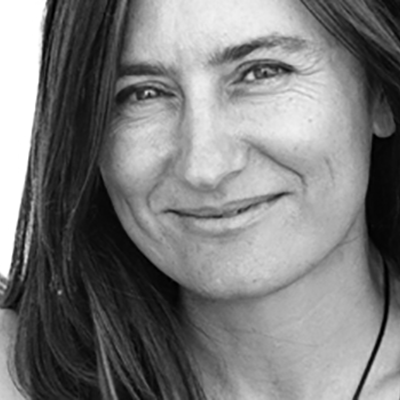The Voice in Signs
Susanna Rafart
The dilapidated stone wall and the elder tree are two realities from my bygone days. I was born in Ripoll: the winters were long and categorical; the snow a frontier; the cold and the boldness of the foxes a constant presence. In those parts, the Romanesque legacy asserted itself in my imaginary world, but so too did the smell of bread baking in nearby wood-fired ovens, the medicinal herbs picked on Sundays, spreading their fragrance through the whole house, my mother’s books, the dictionaries and the mountains encircling a world forever connected with literature. On a distant plain, which we only reached in summer, my Banyoles grandfather kept for me a library with very high shelves in which the whole Bernat Metge collection was waiting to be read. Now nature came to me with the precision of poems. The intense heat of August, the elegant lines of Lucretius, the loves of Sextus Propertius and Ovid’s exiles welcomed me under centenarian holm oaks. The natural world was ablaze.
I recall the handwriting filling in the blank spaces of my first lined exercise books, the illustrations in skimpy textbooks, the initial books of poems read on a small but light-flooded balcony, and the railway lines that set me dreaming. The nature around us was, by then, considerably surpassed. I was the oldest of four sisters. We lost one on the threshold of adolescence.
My first book, winner of the Beniarjó’s “Senyoriu d’Ausiàs March” Prize, was called Olis sobre paper (Oils on Paper). I see poetry as knowledge and, likewise, the physical journey and reader that go with it. Greek and Italian lands have taught me the deep colours of things, in living form and in their poets: Ritsos, Fortini, Tasso, Ungaretti. I have written Pou de glaç (Well of Ice), Baies (Berries), Retrat en blanc (Portrait in White) and the trilogy consisting of L’ocell a la cendra (The Bird in the Ash), La mà interior (The Inner Hand) and La llum constant (The Constant Light). I have sought at the frontiers of genres other ways of understanding poetic creation, especially in the volumes Un cor grec (A Greek Heart) and Gaspara i jo (Gaspara and Me). Then again, but with the same intensity, I have drawn mirrors of my own voice from my work as a translator. Dino Campana, Leonardo da Vinci, Yves Bonnefoy and the Italian poet Salvatore Quasimodo have helped me to run to earth many issues related with writing. There is no poetry without combat, or exercise of art without rupture, so I’ve needed crisis, disheartenment, and abandonment in the blind vigilance of verse.
Why do I write? Maybe because of this necessary vigilance, because of the fox’s eyes that were lit up one night in the headlights of the family car, there in a hollow where a February sky cut out stars with a jack plane. Enveloped in darkness, we were being observed in the territory of fear that both we and the fox felt. Those journeys were long and I spent them wondering. I understood that opposites were the arc in which life had to be tensed; that, sooner or later, I would meet up with that gaze once more; that, sooner or later, it would come to judge me: “Tell me, what have you written? How come you have squandered words?” Victor Català, Saint John of the Cross and Vinyoli saved me in the beginning and, after that, study, reading the greats of contemporary poetry, essays on art, and my travelling companions. I have written for those I have loved.




